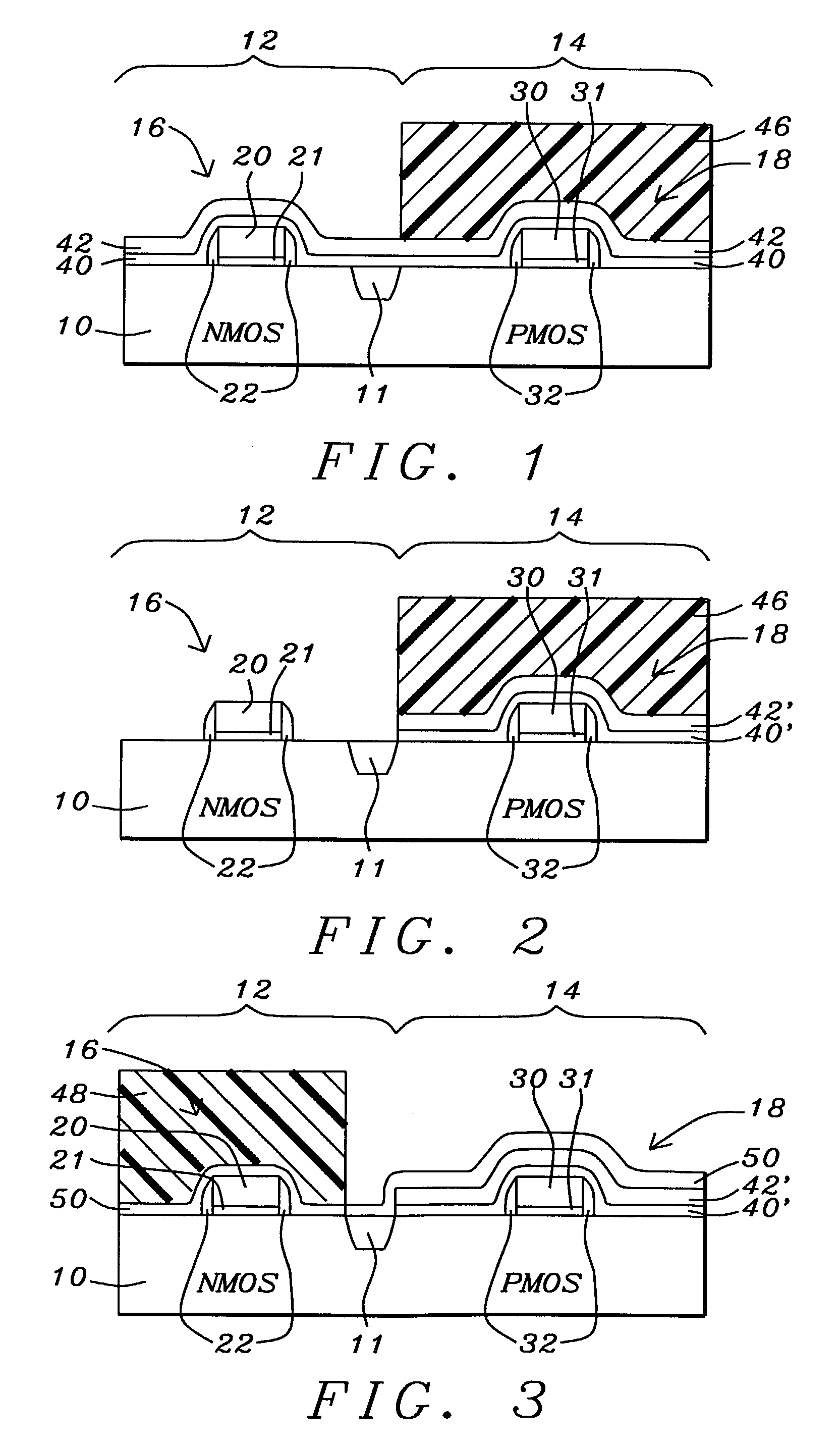CMOS device
a technology of mosfets and cmos, which is applied in the direction of mosfets, basic electric elements, electrical apparatus, etc., can solve the problems of complicated process of strained-si mosfets fabrication, and achieve the effect of improving the mobility of holes and electrons within the structur
- Summary
- Abstract
- Description
- Claims
- Application Information
AI Technical Summary
Benefits of technology
Problems solved by technology
Method used
Image
Examples
Embodiment Construction
Information Known to the Inventors—Not to be Considered Prior Art
[0016]The following information is known to the inventors and is not to be necessarily considered prior art for the purposes of this invention.
[0017]Changing the Si lattice spacing to a value other than the equilibrium value by using mechanical stress can increase the mobility of holes and electrons. This has been demonstrated in a strained-silicon (Si) MOSFET which applied high biaxial tensile stress to the channel of MOSFETs. However, the fabrication of strained-Si MOSFETs involves complicated processes such as forming a relaxed SiGe buffer layer. A recent study has shown that mechanical stress from a contact etch stop silicon nitride (SiN) layer affects the drive current.
[0018]Initial Structure—FIG. 1 As shown in FIG. 1, the preferred structure of the present embodiment includes a structure 10 that preferably includes (1) at least one NMOS region 12 having at least one NMOS (N-type MOS) device 16 formed therein and ...
PUM
 Login to View More
Login to View More Abstract
Description
Claims
Application Information
 Login to View More
Login to View More - R&D
- Intellectual Property
- Life Sciences
- Materials
- Tech Scout
- Unparalleled Data Quality
- Higher Quality Content
- 60% Fewer Hallucinations
Browse by: Latest US Patents, China's latest patents, Technical Efficacy Thesaurus, Application Domain, Technology Topic, Popular Technical Reports.
© 2025 PatSnap. All rights reserved.Legal|Privacy policy|Modern Slavery Act Transparency Statement|Sitemap|About US| Contact US: help@patsnap.com



